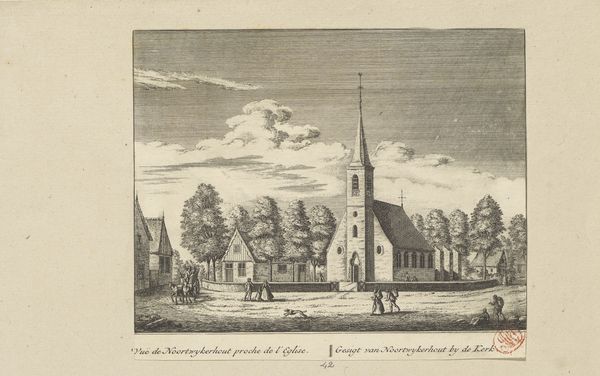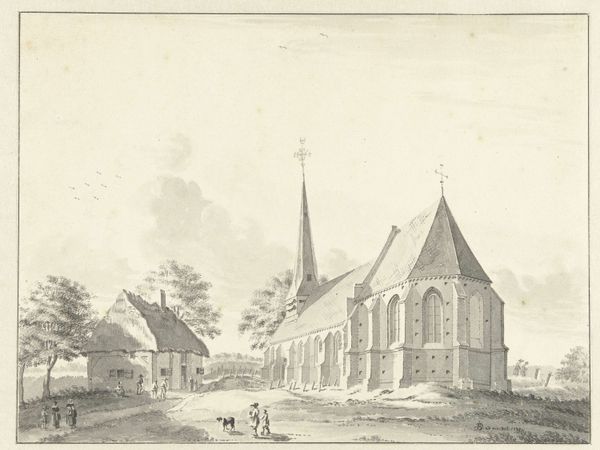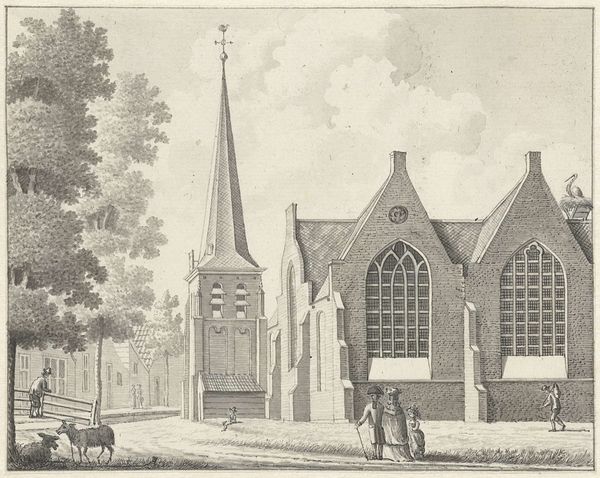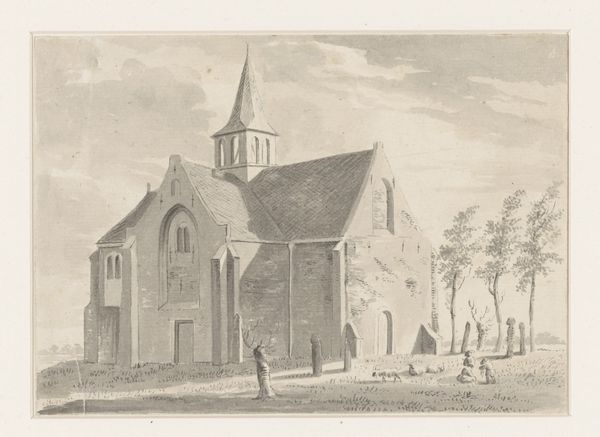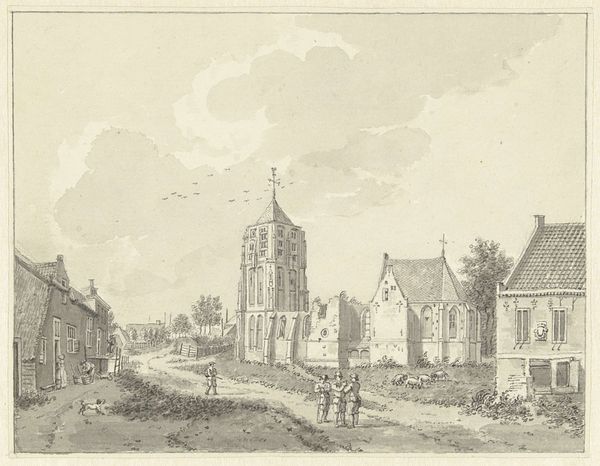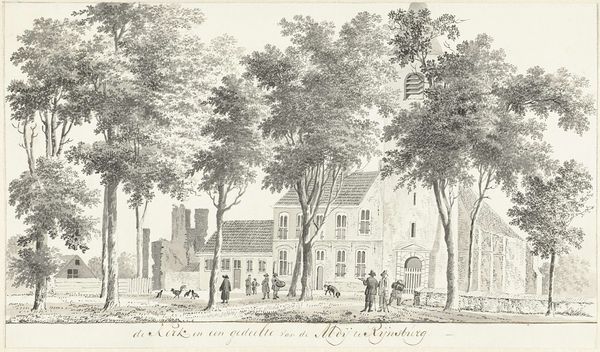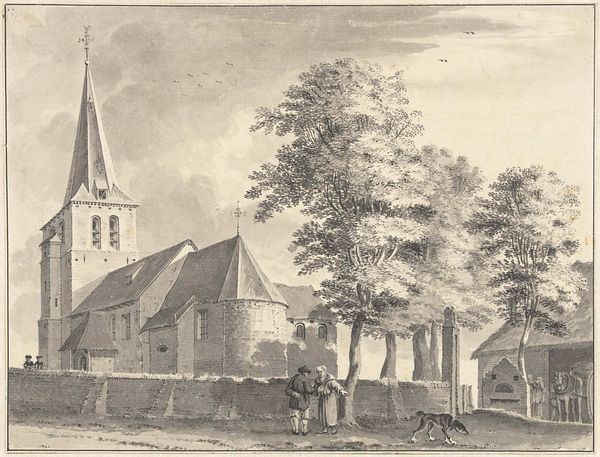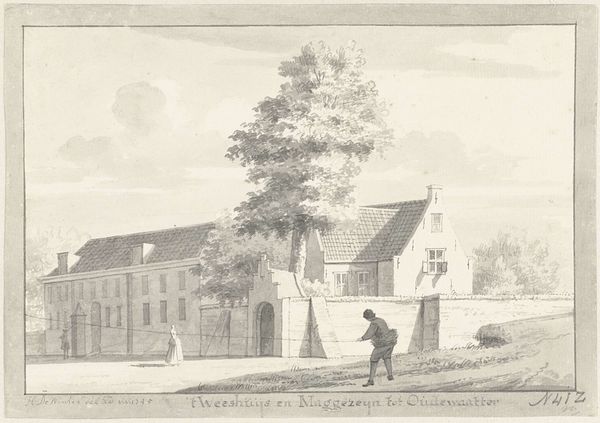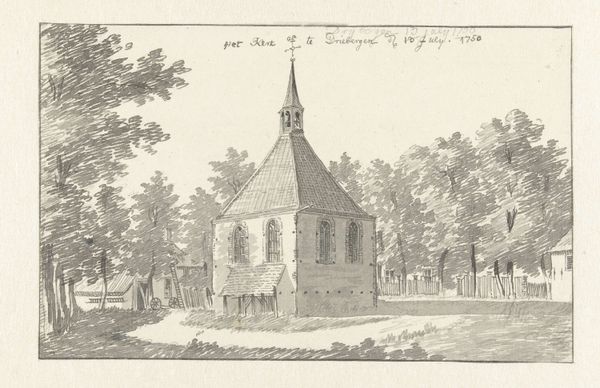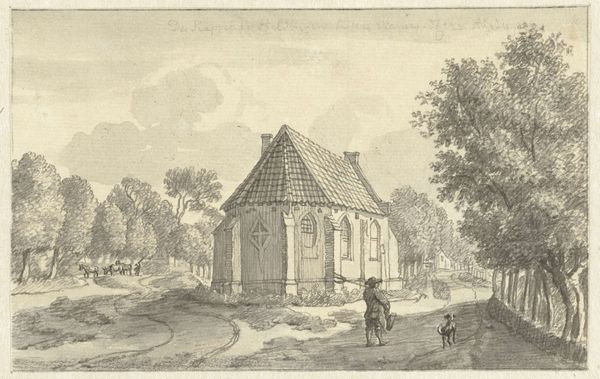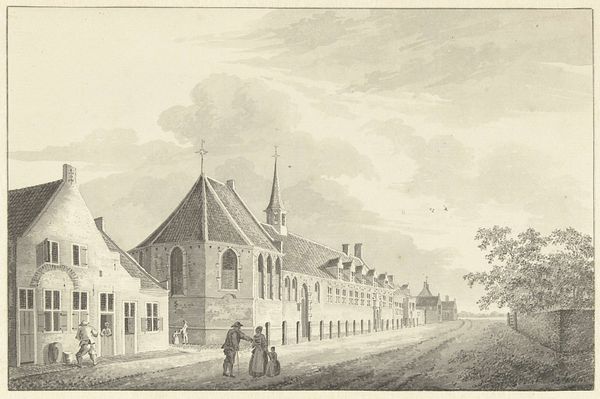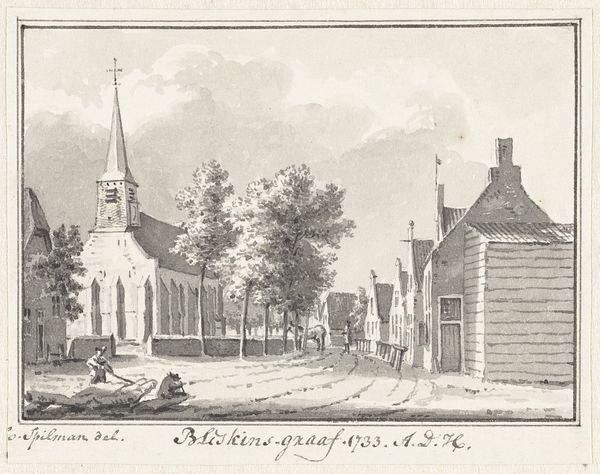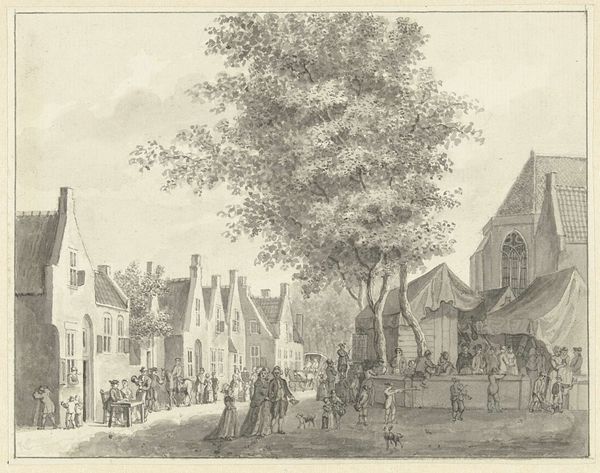
drawing, paper, ink, pen
#
drawing
#
dutch-golden-age
#
landscape
#
paper
#
form
#
ink
#
line
#
pen
#
cityscape
#
genre-painting
#
realism
Dimensions: height 78 mm, width 107 mm
Copyright: Rijks Museum: Open Domain
Curator: Welcome. We're standing before Hendrik Spilman's "The church in the village Krimpen aan de Lek", created sometime between 1733 and 1784. Spilman rendered this tranquil scene using pen and ink on paper, now held in the Rijksmuseum's collection. Editor: It has a rather quaint feel, wouldn't you say? The linear style and muted tones almost evoke a memory or a nostalgic reflection on Dutch village life. Curator: Indeed. What stands out is how Spilman depicts not just the church but the whole social setting. It invites us to think about the function of religious architecture within its surrounding community during the 18th century. Look at the people going about their day around the church, it gives us context. Editor: Yes, it makes you wonder about power dynamics. The church, a prominent structure, but then these everyday moments – a child chasing a dog, someone hauling goods... Are these included to imply the mundane everyday existing under the church’s shadow or rather coexisting within a singular community? Curator: Well, religious life held considerable significance. The church wasn't solely a place of worship; it served as a social hub, impacting the political structure and daily existence for ordinary individuals. The village wasn't merely a backdrop. It highlights the entanglement of the church and the temporal realm, where faith and quotidian struggles intertwine. Editor: The drawing style really focuses on lines to capture the nuances of the landscape; from the brickwork to the swaying trees, which contrasts with the more carefree activity taking place. Almost like these people aren’t concerned with that at all. Curator: I find it a remarkable display of Dutch Golden Age sensibilities. It encapsulates not just an era of burgeoning artistic expression but provides valuable clues into Dutch society during Spilman’s lifetime. It helps us see a picture of life as it was lived in these communities at the time. Editor: Thinking about it now, Spilman’s delicate lines show an almost romantic sensibility; it seems infused with a quiet commentary about place, memory and people which really endears me to this piece. Curator: I agree entirely; these considerations broaden the legacy of Spilman’s church drawing in its setting. Editor: Absolutely! Thank you for lending that perspective.
Comments
No comments
Be the first to comment and join the conversation on the ultimate creative platform.
